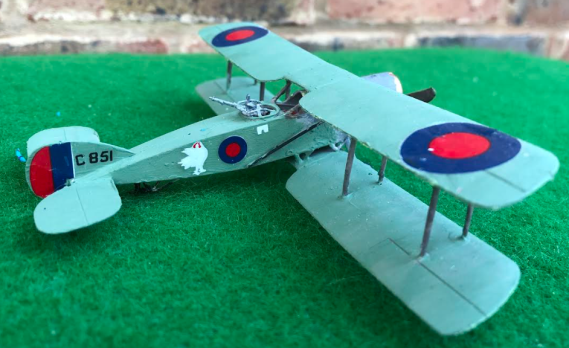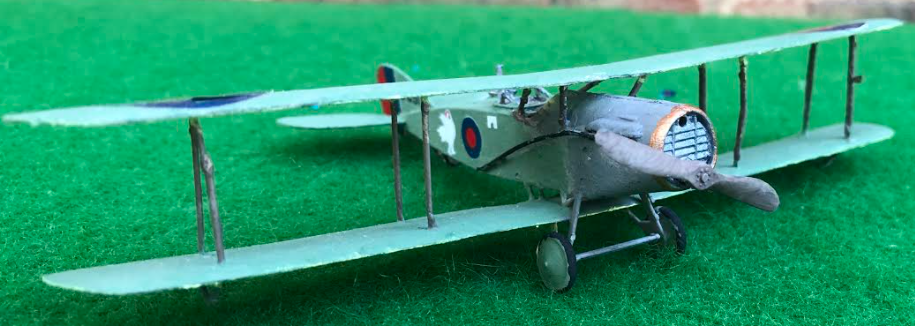BRISTOL F 2B
The Bristol F.2 Fighter was a British two-seat biplane fighter and reconnaissance aircraft of the First World War developed by Frank Barnwell at the Bristol Aeroplane Company. It is often simply called the Bristol Fighter, other popular names include the “Brisfit” or “Biff”.
Although the type was intended initially as a replacement for the pre-war Royal Aircraft Factory B.E.2c reconnaissance aircraft, the newly-available Rolls-Royce Falcon V12 engine gave it the performance of a two-seat fighter. Despite a disastrous start to its career, the definitive F.2B version proved to be an agile aircraft that was able to hold its own against opposing single-seat fighters.
Biggin Hill Connection
No. 141 Squadron of the Royal Air Force was formed on 1 January 1918 at Rochford, for home defence in the London Area. The Squadron moved to RAF Biggin Hill in February and giving up its mixed collection of types in favour of Bristol F.2 Fighters during March 1918.
In 1918, in order to keep up morale, in the home units of the RAF, the General commanding the VIth London Defence Brigade, Brigadier General T.R.C. Higgins organised a Squadron at Arms competition (held at Suttons Farm in Essex). All units in the Command were to participate in formation flying, aerobatics, wireless telephony, gunnery and a Concours d’Elegance of machines, airfields and buildings.
141 were the winning squadron and receive a silver cup, the title of Cock Squadron and the rights to display the fighting cock emblem on their aircraft.


